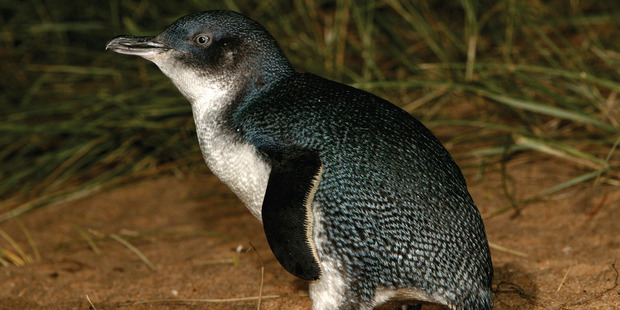Adélie penguins nest on the lower terrace of Cape Adare in the Ross
Sea region of Antarctica. During a research trip in mid-January, UNCW
biology and marine biology professor Steven Emslie said evidence found
suggests around 2,000 years ago the area may have been the nesting
ground for a "supercolony" of nearly 1 million Adélie penguins. Photo
contributed by Steven Emslie.
Published: Sunday, February 28, 2016
During his most recent research trip from December to January to Cape Adare in the northern Ross Sea, Emslie found evidence that an Adélie colony that breeds on a lower terrace in the region may have once been double in size.
The colony on Cape Adare today is the largest Adélie penguin colony in Antarctica, he said, with more than 338,000 nests of breeding pairs.
Because of past research trips, Emslie said he knew abandoned penguin colonies were along an upper terrace above where the birds breed today, but he did not know the scale of them until this season.
“I was probing the ground, and I would see the eggshell remains that indicated former nests there,” he said. “It just kept going on and on and I just couldn’t believe it. We walked a kilometer from the terrace where penguins can gain access to the top and we were still finding abandoned sites.”
Emslie said this evidence means once the lower beach had filled in and penguins had covered that with their nests, more penguins coming in would climb 300 meters up a cliff and then walk up to a kilometer farther to get a nest site.
“I’ve never seen anything like that,” he said.
The two-month research trip stems from collaborative research conducted by UNCW, Louisiana State University and the University of California at Santa Cruz using grants from the National Science Foundation totaling nearly $1.28 million.
Emslie's research partner at LSU, Michael Polito, an assistant professor of oceanography and coastal sciences and principal investigator for the overall project, received his undergraduate and Ph.D degrees from UNCW. Ashley McKenzie, a UNCW graduate student, also helped collect samples on the trip.
With the discovery, Emslie estimates the former “supercolony,” as he calls it, would have comprised of more than half a million nests, or a million birds, when a major population shift occurred nearly 2,000 years ago.
Using sediment and other data samples collected during their trip, Emslie said the next steps will be to complete stable isotope and radiocarbon dating analyses to try and determine if there was a dietary shift going on at the time that would account for such a large colony to amass at the location.
And he hopes to also find answers as to why the area was later abandoned.
Just because the area was abandoned does not mean the number of Adélie penguins is dwindling. He said the birds may have had to move somewhere else to nest because of changes in the environment such as sea ice blockage or icebergs changing the currents.
The data and any answers found, he said, could help direct further research into the current colonies in Antarctica.
"If we can understand what happened in the past with population shifts and dietary changes it can help us understand and predict what will happen in the future with current warming trends and changes in ocean environments and how that’s impacting penguins today," Emslie said. "(Penguins) are really a bioindicator species for the marine environment because they feed on krill and any changes in krill is due to changes in algae, and that’s due to sea ice so there is a linkage between the physical and biological environments."
source



 Under
the microscope, the polyimide replica feather (top) has a radial
density distribution (bottom) similar to a real penguin feather ©
American Chemical Society
Under
the microscope, the polyimide replica feather (top) has a radial
density distribution (bottom) similar to a real penguin feather ©
American Chemical Society
 More than 600,000 Adelie penguins nest on Cape Adare, Antarctica.Steve Emslie, UNCW
More than 600,000 Adelie penguins nest on Cape Adare, Antarctica.Steve Emslie, UNCW



















